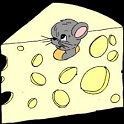
Links
Join
Forums
Find Help
Recovery Readings
Spiritual Meditations
Chat
Contact
 Links |
Join |
Forums |
Find Help |
Recovery Readings |
Spiritual Meditations |
Chat |
Contact |
|
|||||||
|
| Articles, Facts, Information, News Share all interesting Articles, Facts, Information, News here to read and discuss. |
|
|
Thread Tools | Display Modes |
|
|
#1 |
|
Super Moderator
Join Date: Aug 2013
Location: Hamilton, ON
Posts: 25,078
|
Reading the Nutrition Label
What's all that fine print mean to your workout By: Gay Riley, M.S., R.D., C.C.N. Who knows what a gram is? Europeans and cocaine dealers, that's who. But not law-abiding Americans, unless they happen to be dietitians, like me. I know that 5 grams (g) is about a tea s.po.o.n. So whenever I pick up a frozen dinner with 10 g saturated fat listed on the Nutrition Facts label, I see 2 tea s.p.o.o.n.s. of pallid, artery-clogging fat staring back at me. These labels started appearing on every item of packaged food in the United States in 1990. At first, the law required a listing of calories, fat, carbohydrates, protein, and sodium. In 1993, saturated fats and cholesterol were added. And in 2006, all labels will list food allergens and trans fats, the dangerous mutant gunk that's formed when food manufacturers turn liquid oils into solid fats so they'll stay stable on grocery-store shelves. Like most legislation, the labeling law was meant to be helpful. And it has been, mostly. Yet, 14 years later, many people still don't understand how to put the information into practice. This guide is your Cliffs Notes for your next supermarket test. 1. Serving Size and Servings Per Container How much food you're consuming. Don't be fooled: For something that seems so simple, this part of the label can be tricky. What you consider to be one serving may be two or more. This is especially common with bottled beverages, such as iced tea, colas, and sports drinks. So that "100 calories" you glanced at on the label became 250 when you gulped down the whole bottle. Use it: Serving size is listed at the top of the label for a reason. So read it first. Resist scarfing or chugging. Make sure you understand what a serving is. 2. Calories The measure of energy a food provides. Don't be fooled: By itself, this number means little. Calorie requirements are like TiVo settings-everyone's are different. Yours depends on your size and lifestyle. But some universal rules do apply. Too many calories and the surplus gets stored as fat. Too few and you lose weight. Or starve. 3. Calories From Fat The number of calories that come from the food's total fat count. Don't be fooled: This number can vary greatly. But if you multiply it by three and get a number nearly as big as the total calories, proceed with caution. You'll have more reading to do. Use it: Hate math? Ignore Calories from Fat and look at Total Fat instead. 4. % Daily Value The percentage of daily intake the food supplies, based on a 2,000-calorie-per-day diet. Don't be fooled: You probably need more than 2,000 calories, unless you're an average-size man trying to lose weight. But you're a healthy, active Men's Health reader who just checked the calorie counter at MensHealth.com, so . . . Ignore it. 5. Total Fat The combined total of saturated, polyunsaturated, monounsaturated, and trans fats-the stuff that makes food taste good. Don't be fooled: Something with a lot of grams of fat isn't always bad. Some fats are good for you. Use it: Look below Total Fat at the number for Saturated Fat. You want to see a ratio that's at least three to one, total to saturated. More specifically, look for 3 g total fat and 1 g saturated fat per 100 calories. So if a frozen dinner has 400 calories and 12 g total fat, that's 3 g per 100 calories. But now look further: If Monounsaturated and Polyunsaturated Fats are listed below Saturated Fat, the food is probably healthy. Companies don't have to list these healthy fats, so this bragging should encourage you. If you don't see them, though, you'll have to learn a couple of quick analysis tricks to figure out what the balance between Total and Saturated Fat is. See Solved! Solved! The Mystery of Food Labels' Fuzzy Math. In 2006, we'll see Trans Fats listed-avoid these whenever possible. 6. Cholesterol A fatlike substance in foods from animals. Don't be fooled: It's not that important. Your body manufactures most of the cholesterol in your system; what food adds is small. Use it: Don't sweat it, but shoot for 300 milligrams (mg) or less per day. 7. Sodium A mineral (salt, basically) usually added for flavor and to help preserve foods. Don't be fooled: Those big numbers jump out at you-but don't panic. Use it: Unless you have high blood pressure or are sodium sensitive, use 2,000 mg as a reasonable target for total daily sodium intake. So a frozen dinner with 1,300 mg should go back in the store's freezer. Let some other sucker have it. 8. Total Carbohydrate All of the sugar, starch, and fiber in a food. Don't be fooled: The total number isn't very important. It's what kinds of carbohydrates are inside. So... Ignore it. And keep reading. 9. Dietary Fiber The roughage that serves as a pipe cleaner for your digestive and circulatory systems. Don't be fooled: Fiber comes in two types-soluble and insoluble-and each is crucial to your diet. Because insoluble fiber is digested but not absorbed, it helps you feel full. As it moves along, it keeps the other stuff you've eaten moving along, too. (This property can have a beneficial effect on your waistline. A USDA study found that people who eat 36 g fiber each day essentially lose an extra 130 calories.) And, of the two types, insoluble fiber is much easier to find; just look on the ingredient list for the words "whole grain." You'll also find insoluble fiber in nuts, seeds, and beans. Soluble fiber moves from the digestive system to the circulatory system, keeping blood vessels lubed so cholesterol won't stick. Top sources include oranges, apples, and oats. Use it: Any food with 2 g fiber-of any kind-per serving is good. Five grams or more is great. Generally, the higher the fiber count, the healthier the food. 10. Sugars The sweet stuff that you eat 150-plus pounds of per year. Don't be fooled: Not all sugars are the white death your hippie girlfriend claimed. Some are inherent in the foods you eat, like the following: fructose (fruit sugar), glucose (dextrose), galactose (milk sugar), lactose (another milk sugar that blends glucose and galactose), and maltose (malt sugar). You won't find a "sugar-free" milk. These sugars aren't the ones to worry about. With snack foods or cereals, it's the added sugars that get you into trouble. Sucrose (table sugar) and cane juice inflate the calorie count. High-fructose corn syrup does, too. It's also metabolized into fat faster than other sweeteners and can throw off your body's weight-regulating hormones. Glance at the Ingredients, then back at the Sugars. Use it: Aim for 5 g or less of sugar per serving. 11. Protein The amino acids that build and maintain your entire body. Don't be fooled: Ever meet an American with a protein deficiency? Me either. The only thing you really need to know about protein is that it helps keep you feeling satisfied. Gym rats should top out at 162 to 225 g per day. Thinner guys need no more than 114 g. Use it: When choosing foods, especially snack foods you'll be tempted to overeat, make sure they contain some protein. 12. Vitamin and Mineral Percentages The food's percentage of the minimum amounts of nutrients required to prevent various deficiency diseases. Don't be fooled: All labels must list four basic nutrients: vitamin A, vitamin C, calcium, and iron. Others must be listed if they're added as supplements (which is why you see so many on nutrient-fortified breakfast cereals). But remember, these numbers are based on minimum intakes-the least amount of vitamin C you can consume to avoid coming down with scurvy, for instance. Don't get me wrong-foods with higher DV percentages of nutrients are usually smart choices. But taking a multivitamin with breakfast is the best approach to meeting your vitamin and mineral needs. Do that and you can... Ignore it. 13. Ingredients What's in the food, arranged in order by weight from most to least. Don't be fooled: Not every food is as it seems. For example, processed peanut butter contains peanuts, along with extra sugars and molasses for sweeter flavor, partially hydrogenated oils to keep the blend of fats shelf-stable, and mono- and diglycerides, emulsifying fat molecules that help give foods a creamy texture. Natural peanut butter is made with two ingredients: roasted peanuts and salt. No surprises there. Use it: Criminals such as high-fructose corn syrup and partially hydrogenated oils should occupy fifth place or lower.
__________________
Love always, Jo I share because I care. 
|
|
|

|
| Sponsored Links |
  |
| Bookmarks |
| Currently Active Users Viewing This Thread: 1 (0 members and 1 guests) | |
|
|